A Journey Through Forgotten Truths
What if the Buddha’s true origins lie not in India, but in the heart of Sri Lanka?
For centuries, the story of the Buddha has been told from a singular perspective. But history is rarely that simple. Here, we invite you to walk a different path—guided by ancient Lankan chronicles, sacred geography, and cultural memory. Discover a theory that could reshape what we know about the Buddha’s journey—and where it truly began.
Who Claimed Buddha Was Born in India?
The Man Behind Lumbini: Alois Anton Führer
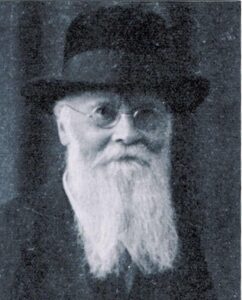
-
Discovery of the Lumbini Pillar in 1896
-
Führer’s legacy of fraud
-
Modern scholars accept the pillar but question the narrative built around it
India vs. Sri Lanka – Sacred Site Comparison
Geography vs. Believability: Could These Journeys Have Happened?
Over 2,500 years ago, could a prince-turned-ascetic have truly walked hundreds of kilometers across ancient India’s harsh terrain?
India’s Sacred Path (Approx. 850+ km):
Lumbini → Bodh Gaya (~375 km)
Bodh Gaya → Sarnath (~250 km)
Sarnath → Kushinagar (~225 km)
These routes cross rivers, jungles, and open plains—challenging even today.
Sri Lanka’s Alternative (Approx. 390 km):
Birth: Bambaragala, Theldeniya
Enlightenment: Hiriwadunna Bodhi Tree (~100 km)
First Teaching: Isinbessa Gala (~60 km)
Healing & Meditation: Ritigala Jethawanarama (~80 km)
Parinirvana: Budhugala (~150 km)
These sacred sites are naturally aligned within Sri Lanka’s central and northern terrain—lush, walkable, and dotted with ancient forest monasteries. A logical landscape for a spiritual wanderer.
A Reimagined Pilgrimage – Rediscover the Sacred Trail
Could These Be the True Milestones of the Buddha’s Journey?
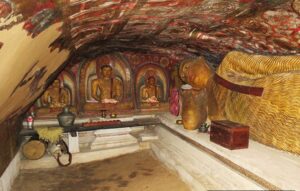
Bambaragala, Theldeniya
A mountainous cradle of serenity, claimed as the true birthplace of Siddhartha.
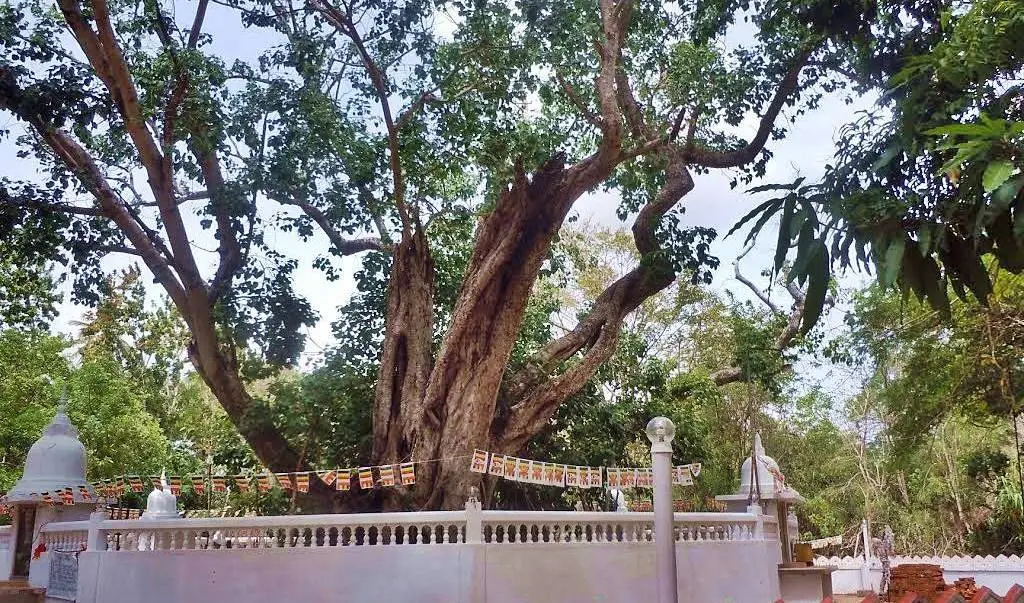
Hiriwadunna Bodhi Tree
A sacred fig tree said to mirror Bodh Gaya’s tranquility. Locals revere it as the site of Enlightenment.
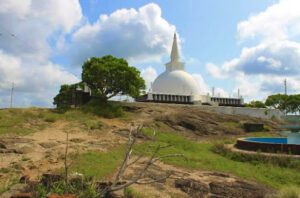
Isinbessa Gala
A rocky outcrop where the first sermon may have echoed—known for its acoustics and cave shrines.
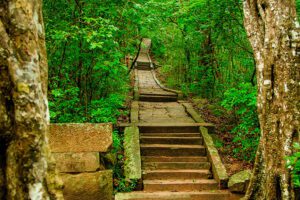
Ritigala Jethawanarama
An ancient forest monastery, home to legends of healing, meditation, and sacred herbs.
Each site aligns naturally with Sri Lanka’s geography—connected through forest paths, rivers, and cultural memory.
Name Echoes & Linguistic Clues
Do Ancient Names Echo Louder in Sri Lanka?
Ancient place names may hold secrets modern maps have forgotten. Let’s compare:
| Traditional Name | Sri Lankan Parallel | Notes |
|---|---|---|
| Kapilavastu | Kapila-gama (multiple provinces) | Multiple verified locations in Lanka with similar names |
| Lumbini | Lumpala / Lompini | Found in southern and central Sri Lanka |
| Devadaha | Dewagala / Dewa-daha | Appears in Sinhalese place-name etymology |
Linguistic Hints:
Gama = village (still in use today)
Pabbata = mountain
-gala = rock, -nuwara = city/fort (e.g., Anuradhapura, Polonnaruwa)
Many of these terms appear in ancient Pāli texts, hinting that the language of the Buddha was far more familiar to Lankan geography than modern India.
Environmental & Cultural Logic
Sri Lanka: A Land Perfect for a Wandering Sage
Unlike the varied and often unforgiving climate of ancient India, Sri Lanka offers a uniquely suitable environment for spiritual practice:
-
🌴 Tropical climate – consistent year-round
-
💧 Abundant rivers and edible plants – sustenance for forest-dwelling ascetics
-
🛕 Forest monasteries – places like Ritigala and Mihintale existed long before colonial-era records
-
🦅 Animal symbolism – sacred birds and elephants, central in Lankan Buddhist imagery
The island’s landscape and ancient culture make it not only a likely refuge for meditation—but possibly the very heart of the Buddha’s real journey.
Frequently Asked Questions: Challenging the Buddha of Lanka Theory
❓ Q1: Isn’t it well-established that the Buddha was born in Lumbini, Nepal?
Answer:
Lumbini was promoted as the Buddha’s birthplace based on later inscriptions like Ashoka’s pillar. However, ancient Lankan chronicles like the Mahavamsa point to a different location entirely—Babaragala in Theldeniya. Our research compares original Pali text references and geography to show how this alternate identification is supported.
Read: Was the Buddha Really Born in Nepal? A Mahavansa-Based Reassessment
❓ Q2: Why do most Buddhist countries and scholars accept India as the Buddha’s homeland?
Answer:
This widespread belief was shaped largely by colonial-era archaeology and 19th-century European interpretations. Local Sri Lankan sources were often dismissed or misinterpreted. Our goal is to bring these native texts and oral traditions back into the conversation.
Read: Colonial Archaeology and the Rewriting of Buddhist Origins
❓ Q3: If Buddha was born in Sri Lanka, why are the main pilgrimage sites in India?
Answer:
Pilgrimage centers evolved through imperial influence and trade routes. Meanwhile, Sri Lanka’s Solosmasthana and ancient monasteries preserved the original memory of the Buddha’s life journey. Our project revives these forgotten sacred spaces.
Read: Why India Became the Buddhist Pilgrimage Hub — And What We Forgot About Lanka
❓ Q4: Where is the archaeological evidence in Sri Lanka?
Answer:
Sites like Budugala, Ritigala, and Isinbassagala match descriptions found in ancient texts and pilgrimage records. Many of these locations contain ruins and relics dating further back than Indian counterparts but have received far less global attention.
Read: Ancient Sites, Enduring Truths — Rediscovering the Buddha’s Path in Lanka
❓ Q5: Aren’t the Mahavamsa and other Lankan texts based on Indian sources?
Answer:
Not entirely. While they reference shared Pali teachings, chronicles like Saddharmaratnavaliya and Rajavaliya reflect uniquely Sri Lankan perspectives and geography. They were composed centuries before colonial reinterpretation.
Read: Mahavansa, Saddharmaratnavaliya & the Lost Geography of the Buddha
❓ Q6: Why did Chinese pilgrims like Faxian and Xuanzang travel to India, not Sri Lanka?
Answer:
Actually, Faxian did visit Sri Lanka and wrote extensively about it. His descriptions (e.g., crossing the sea, finding Sangharamas with Tooth Relics) better match Sri Lanka than modern Indian sites. We decode these journeys with geographical comparisons.
Read: Faxian’s Real Route: A Pilgrimage Log that Points to Sri Lanka
❓ Q7: Why do the Tripitaka and Pali texts mention Indian place names?
Answer:
Many names like Gaya or Kapilavatthu could refer to places that also existed in ancient Lanka. Over time, the names may have been mapped onto Indian sites due to translation drift or political shifts. We highlight these original Lankan parallels.
❓ Q8: Are you saying all ancient scholars were wrong?
Answer:
Not wrong—just working with the knowledge and context they had. We’re not denying their contributions but offering new interpretations based on overlooked evidence and modern tools.
❓ Q9: Are there foreign records that question Indian geography?
Answer:
Yes. Several texts—including Faxian’s travelogues—mention lands “surrounded by the sea” and mountain ranges not found in India. These match Sri Lankan terrain more closely and are often overlooked in traditional mappings.
❓ Q10: Is this theory supported by academic or archaeological institutions?
Answer:
While still emerging, several Lankan scholars (e.g., Prof. Raj Somadeva) have presented arguments in alignment with this theory. Our mission includes consolidating their work into an accessible public archive.
❓ Q11: If Sri Lanka is the Buddha’s homeland, why did Buddhism spread from India?
Answer:
India became a later power center, especially under Ashoka and Gupta rulers. However, Sri Lanka maintained the oldest form of Buddhism—Theravāda—and preserved the original teachings when India shifted toward Mahayana.
❓ Q12: Is this theory divisive or harmful to Buddhist unity?
Answer:
Not at all. The Buddha encouraged seeking truth through investigation. Our approach is respectful, scholarly, and rooted in unity—not nationalism. We’re simply rediscovering a possibly lost chapter in Buddhist history.
Disclaimer (Respectful & Transparent)
A Note of Respect and Transparency
The theories presented on BuddhaOfLanka.com are based on alternative readings of Sri Lankan texts, oral traditions, place names, and cultural heritage. We do not claim to offer academic proof—only a compelling lens for exploration.
This content is interpretive, intended to:
Encourage independent inquiry
Inspire spiritual curiosity
Preserve ancient Sri Lankan narratives that may otherwise remain unheard
🙏 We honor all Buddhist traditions and seek only to enrich the ongoing conversation around the Buddha’s life, not to undermine it.
Ready to Walk the Path Less Taken?
Follow the sacred sites. Read the lost names. Walk the journey of the Enlightened One—across the forests, mountains, and temples of ancient Sri Lanka.
